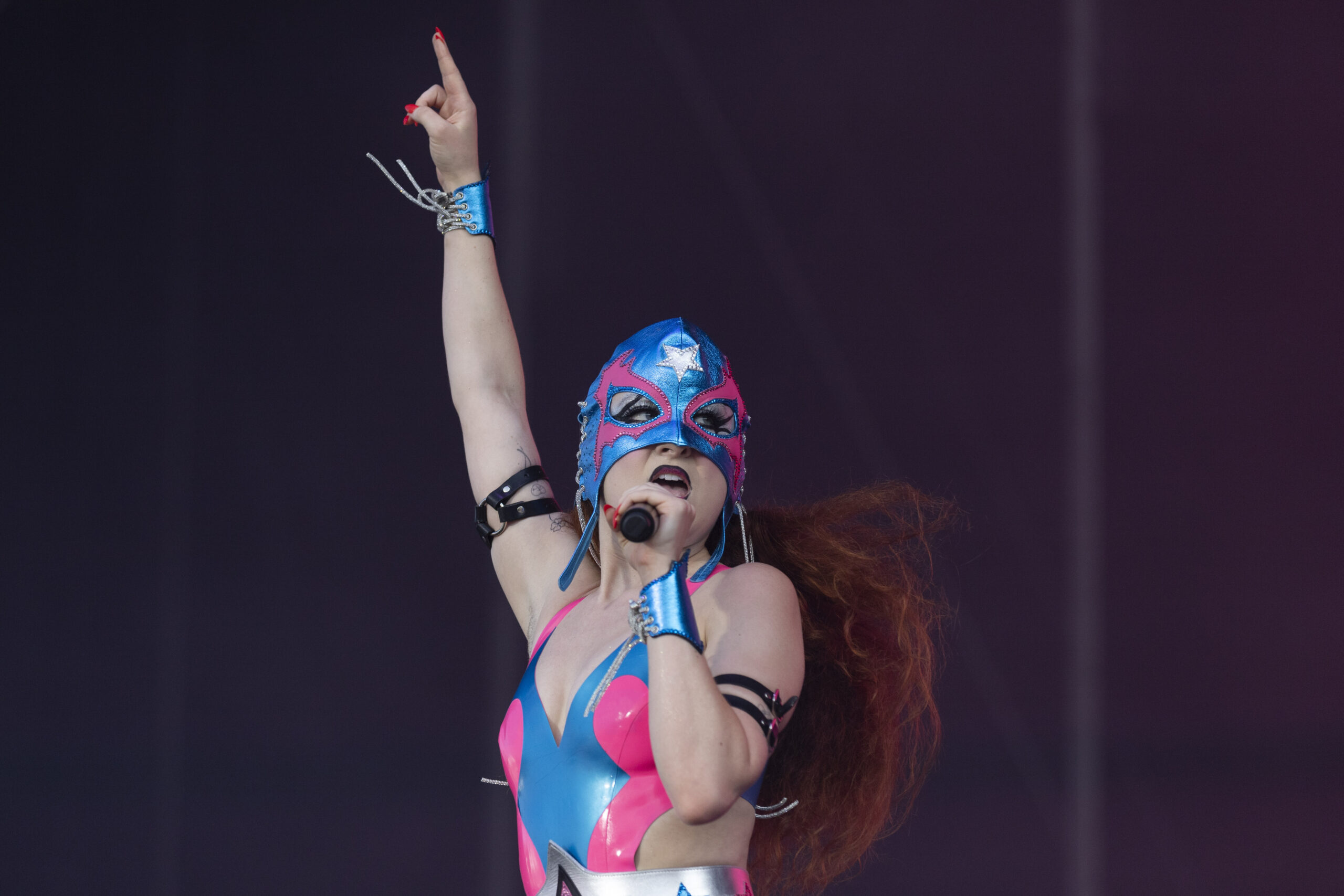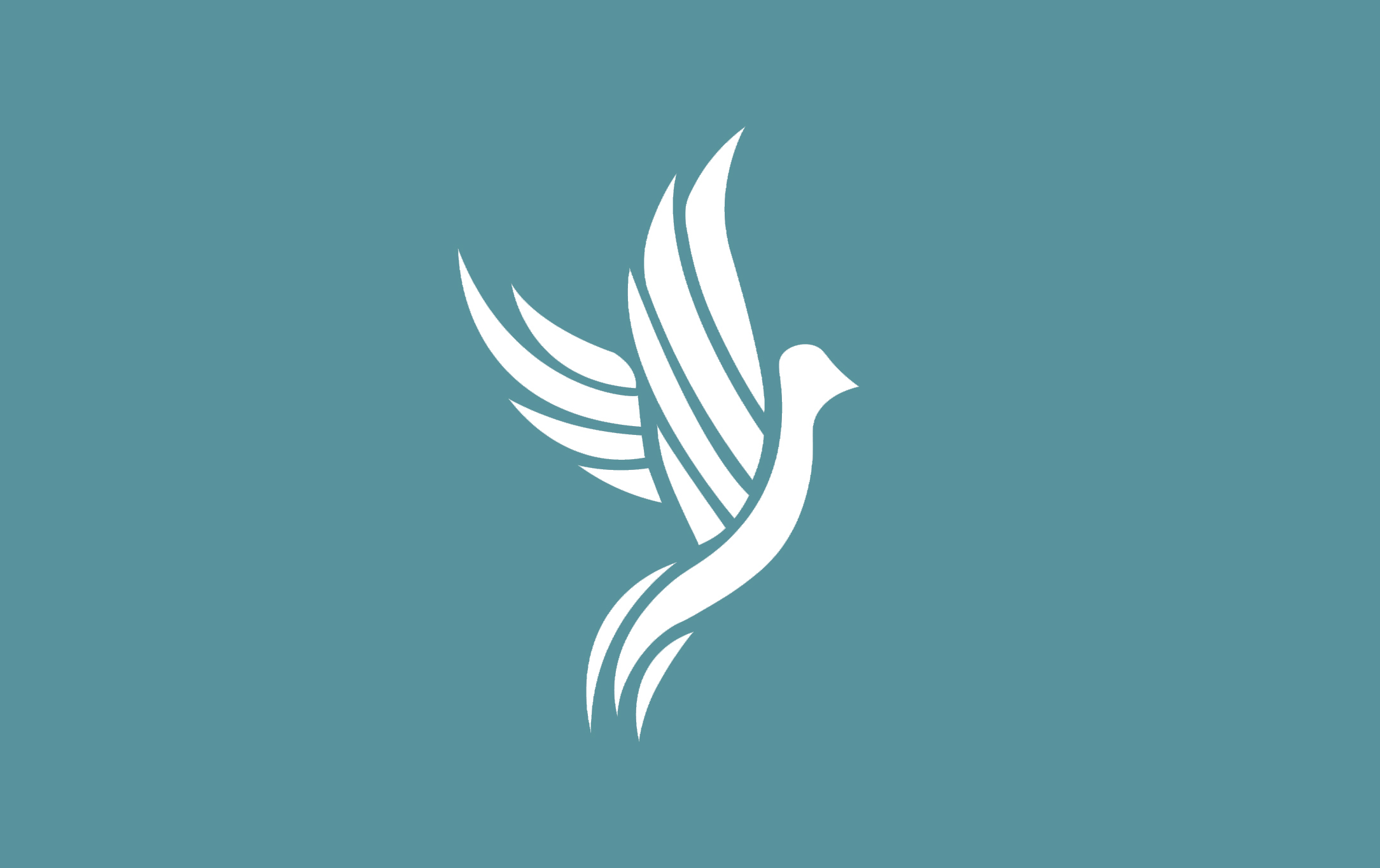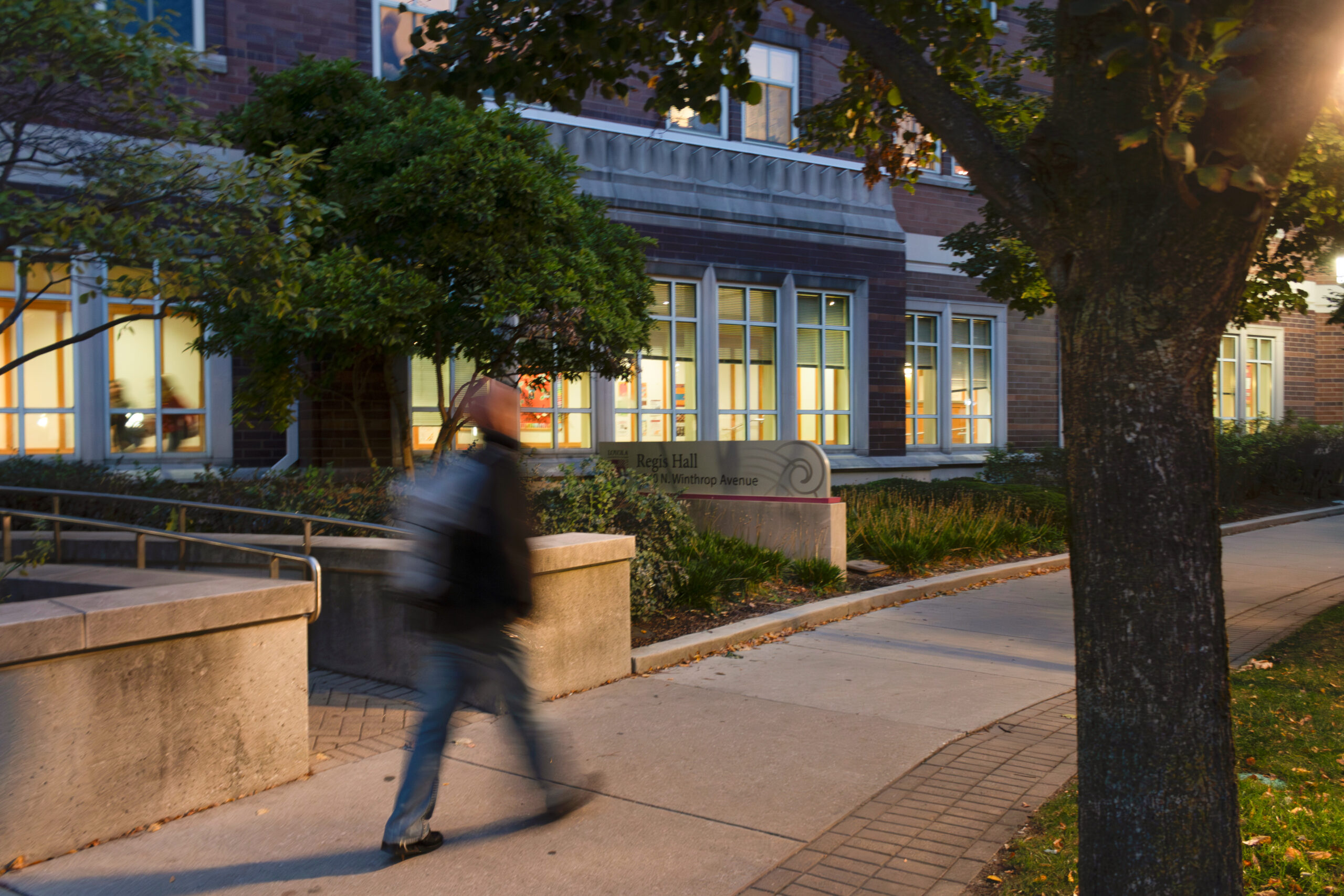The rich tradition of “Dia de los Muertos” is on display at the Nation Museum of Mexican Art in Chicago’s Pilsen neighborhood. Through Dec. 11, traditional “ofrendas” made by local Mexican artists about death and grief will be on display.
For some, the final days of October are an excuse to dress up in costume, rewatch classic horror movies and consume copious amounts of candy. For those of Mexican heritage, the season brings anticipation for Dia de los Muertos — Day of the Dead — a ceremonial tradition observed from Oct. 31 to Nov. 2.
The centuries-old holiday celebrates the spiritual return of deceased relatives to their families, according to the Associated Press (AP). Ancestors are welcomed with their favorite food and drink at gravesites or on altars known as “ofrendas” according to AP.
Ofrendas are often adorned with marigolds, candles, photographs of the deceased, “calaveras de azucar” — replicas of human skulls handmade from sugar paste — and “pan de muerto” or “bread of the dead,” according to Smithsonian Magazine. The exhibit combines ofrendas with other art mediums to create a celebration of life and grief, according to the museum.
At the National Museum of Mexican Art (1852 W. 19th St.) in Chicago’s Pilsen neighborhood, the vibrant culture of Dia de los Muertos is on display with ofrendas made by local Mexican artists. The ofrendas vibrantly showcase the holiday through traditional objects and symbols.
Now onto its 36th year, the 2022 exhibit is titled “Memories & Offerings.” The exhibit commemorates those who passed away due to COVID-19. Works of art pay tribute to grief and shared suffering while reminding viewers of the importance of remembrance and acceptance.
Curated by Cesáreo Moreno and Dolores Mercado, “Memories & Offerings” combines photography, fine art and mixed media to craft a strikingly somber reflection on the cycle of life and death.
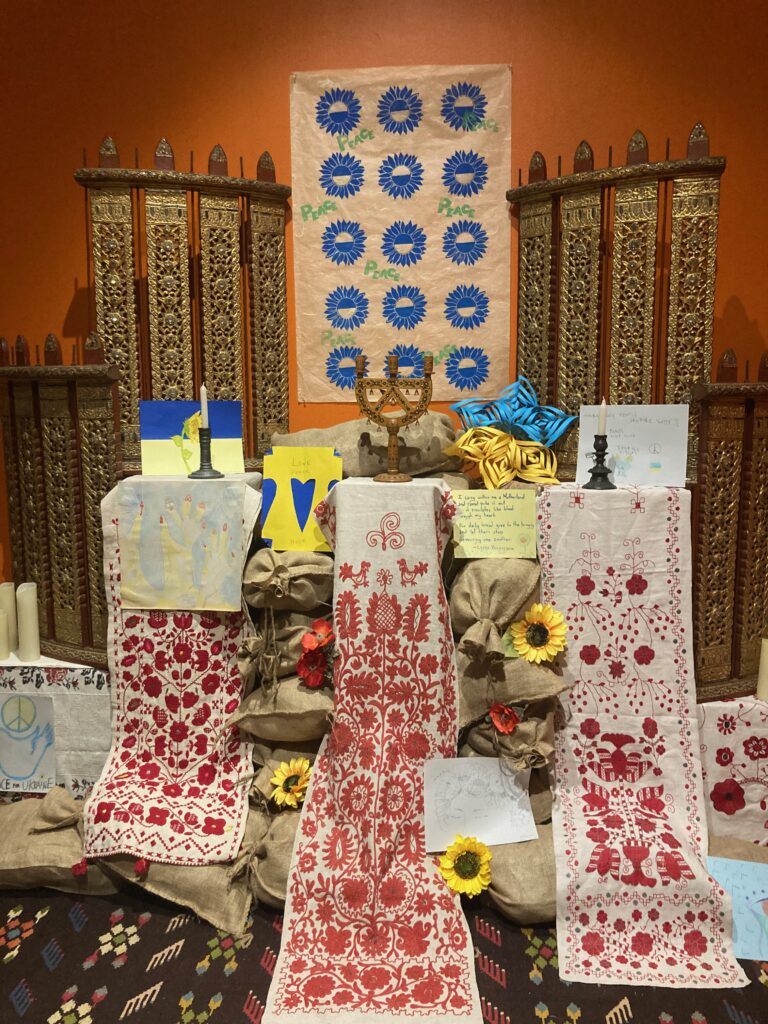
One such example is “Ofrenda a los Arrancados” — “Offering to the Uprooted” — by Carlos Flores, a Mexican-American artist based in Chicago’s southwest side.
The museum’s written description of Flores’ work said his art highlights the disproportionate burden of COVID-19 on Mexican working class communities who are victims of political inaction amidst the pandemic. Shipping crates and torn personal protection equipment evoke images of essential workers exposed to COVID-19, while shards of glass communicate Flores’s frustration with social inequality.
Another ofrenda commemorates the victims of the May 24 shooting at Robb Elementary School in Uvalde, Texas, a predominantly Latino city according to AP. The piece features monarch butterflies symbolizing the cyclical nature of life, pecan trees for strength and an untitled poem by Mardonio Carballo. The piece’s written description explained that its creators, members of Chicago’s Bernhard Moos Elementary School, call for an end to senseless gun violence in America.
Atsumit Flores from Villa Park, Illinois, said the piece made her reflect on the tragic event in a new light.
“It feels like it happened so long ago and it’s so recent still,” said Flores, a first-time visitor of the museum.
Violence is a recurring theme in the exhibit, felt both locally and globally. One ofrenda, contributed by Chicago’s Ukrainian Institute of Modern Art (UIMA), commends the resilience of Ukranians across the world in wartime.
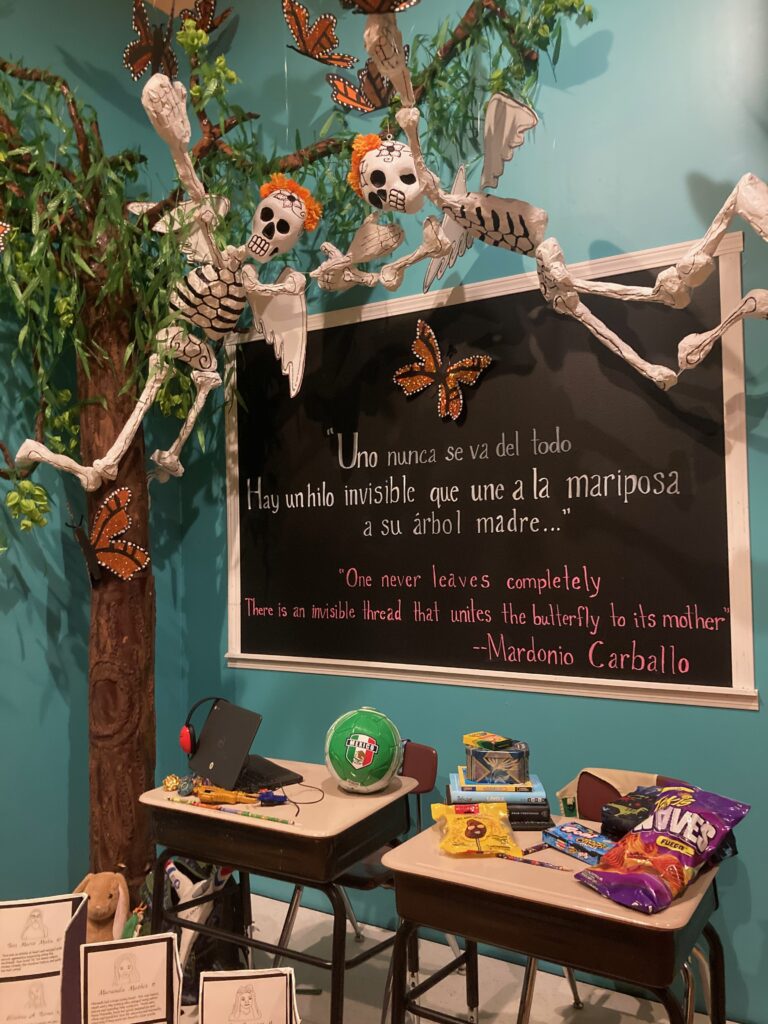
The altar incorporates works from an open art call. In March, participants in UIMA’s Protest Art Exhibition contributed poems, art or other creations. The resulting altar paints a candid portrait of Ukraine and its supporting community.
One of the most sobering elements is a blue and yellow sketch, seemingly in the handwriting of a child, that reads, “Make more peaes! Stop the war!”
UIMA Curatorial Assistant Christina Wyshnytzky said the gallery space is a form of protest. The resulting piece displayed in “Memories & Offerings” is intended to promote optimism and perseverance rather than depict graphic images of war, according to Wyshnytzky.
“It stands as our form of cultural resistance and unity,” Wyshnytzky said. “It’s our duty to preserve what we can.”
In bridging Mexican and Ukrainian culture, Wyshnytzky said she saw many similarities in the embroidery of the two cultures when installing the piece. Shrines similar to ofrendas are common in Ukrainian households but often revolve around religion and icons, according to Wyshnytzky. Still, grief and loss play an important role in both cultures, especially in the context of the Ukrainian war, according to Wyshnytzky.
“Memories & Offerings” pays tribute not only to the previous generation but instills hope and perseverance in future Mexican-Americans, quantifying their pain while encouraging resilience in fighting for equality.
National Museum of Mexican Art staff member Marlene Calderon, who has worked as a gallery attendant for 10 months, said she’s surprised by the diverse crowd the museum attracts. Visitors are both Pilsen locals and people from across Chicago, according to Calderon.
“It’s nice to see them, because who would have thought they would care about our culture like that?” Calderon, a Pilsen resident, said. “It’s nice to know that at least they take interest, to participate or at least to try to understand.”
“Memories & Offerings” will be on display through Dec. 11. Admission is free, though donations are encouraged. The museum is open Tuesday through Sunday from 9 a.m. to 5 p.m.
Featured image courtesy of Annelise Richardson | The Phoenix







